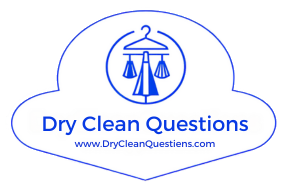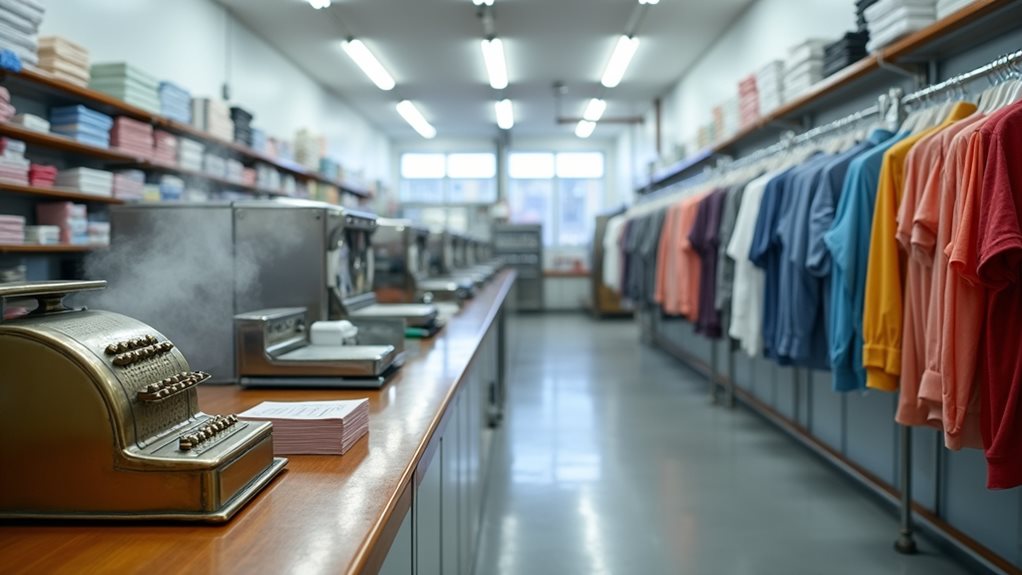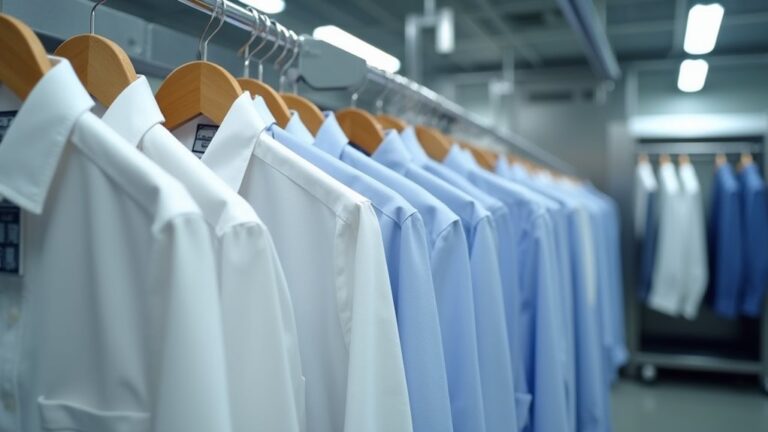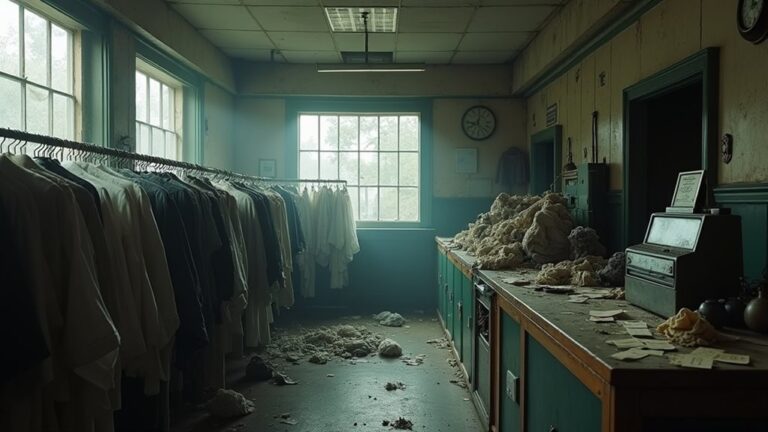Your dry cleaning business earnings will largely depend on where you set up shop, with small-town operations typically bringing in around $24,000 annually while urban locations can reach $120,000 or more. Most owners see monthly earnings between $600 for struggling locations and $3,000 for average performers, though exceptional urban operations can pull in $15,000+ monthly. The sweet spot requires processing about 2,000 pieces monthly to cover those $10,000 fixed expenses, and there’s definitely more to uncover about maximizing your potential.
Revenue Generation and Pricing Structure for Dry Cleaning Services
While most people think dry cleaning is just about tossing clothes behind a counter and magic happening, the reality is that your revenue depends entirely on how smartly you price your services and present them to customers.
Your business model should balance operational costs with competitive pricing—basic shirts and pants typically run $3-7, while suits and dresses command $10-20.
Here’s where it gets interesting: those bulky comforters and drapes? They’re your profit margin goldmines at $15-30 each.
Smart owners boost customer loyalty through subscription-based packages that offer discounts while guaranteeing steady income.
Don’t forget additional services like stain removal ($2-5 extra)—they’re pure profit that separates successful cleaning businesses from struggling ones! 💰
Understanding fabric complexity helps you justify premium pricing for delicate materials that require specialized handling and care.
Customer Segmentation and Average Annual Spending Patterns
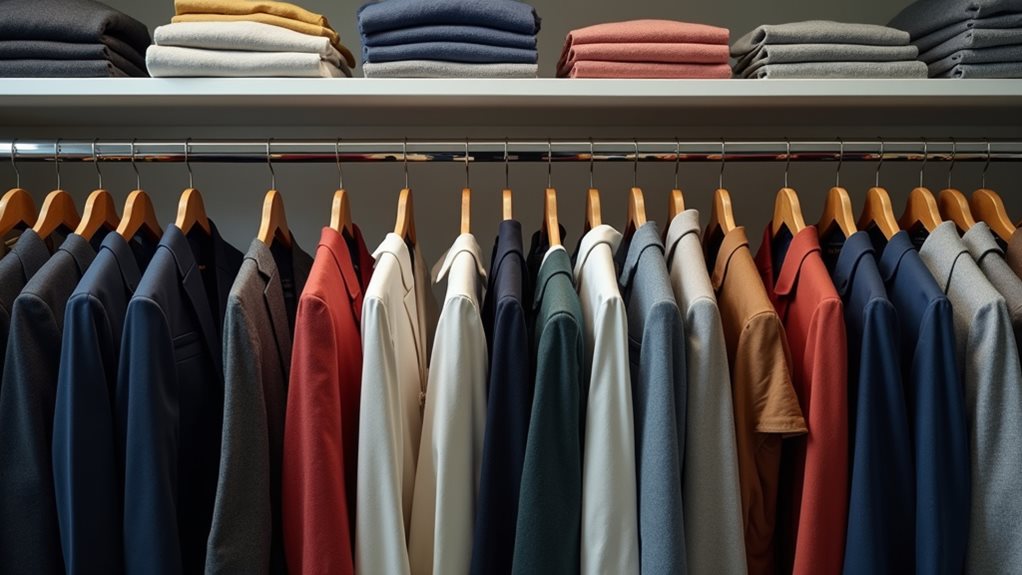
Every successful dry cleaning owner I’ve worked with over the years has learned one crucial truth: understanding who walks through your door, and how much they’re willing to spend, makes the difference between barely surviving and actually thriving in this business.
Your customer segmentation typically splits between individual households and business accounts, each creating distinct revenue streams with different annual spending patterns. Individual customers average $1,000-$1,200 yearly, visiting one to four times monthly with an average price of $20-$50 per visit.
Smart owners I know focus heavily on repeat customers through loyalty programs, because retention drives profitability.
Urban locations naturally attract higher-spending clientele compared to small town dry cleaners, but don’t let that discourage you – specialized services like wedding dress preservation can boost your customer base’s spending regardless of location. Building a strong customer base in affluent neighborhoods or business districts is particularly important since these areas typically support the higher profit margins of 15-25% that established dry cleaners achieve.
Monthly and Annual Revenue Benchmarks by Location Type

When you’re ready to set realistic expectations for your dry cleaning business, location becomes the single biggest factor determining whether you’ll hit $2,000 or $30,000 in monthly revenue.
Small-town operations typically generate around $24,000 annually, while urban locations can reach $120,000 yearly – quite a difference!
High-end metropolitan areas offer the sweet spot, where customer spending patterns and pricing flexibility can push your dry cleaning business toward $360,000 in annual revenue.
The math is pretty straightforward: urban customers visit more frequently and spend $20-50 per visit, compared to rural areas where visits are less frequent.
Achieving profitability requires processing about 2,000 pieces monthly, which means your location type directly impacts operational efficiency and whether you’ll cover those fixed expenses comfortably.
Most successful dry cleaning operations maintain net profit margins between 10-20%, which means even a modest business can generate substantial returns when positioned in the right market.
Operating Expenses and Breakeven Analysis

Understanding your operating expenses isn’t just about crunching numbers on a spreadsheet – it’s about knowing exactly where every dollar goes so you can sleep soundly at night, knowing your business won’t suddenly drain your savings account.
Your dry cleaning business carries substantial operating expenses, including chemical solvents, equipment maintenance, rent, wages, and utilities, which directly impact your profitability.
Through careful breakeven analysis, you’ll discover that servicing approximately 2,000 pieces monthly typically covers fixed expenses around $10,000. While average performance generates about $3,000 in monthly earnings, effective cost management can dramatically improve your gross revenue.
Breaking even at 2,000 monthly pieces with smart cost management transforms $3,000 average earnings into substantially higher profits.
Smart entrepreneurs negotiate with vendors, control utility costs, and maintain high-quality service without overspending, transforming their operations from cash-draining headaches into profitable ventures.
With proper operational efficiency, dry cleaning businesses can achieve profit margins ranging from 15-25%, making this a viable investment when managed correctly.
Profit Margins and Owner Earnings Potential
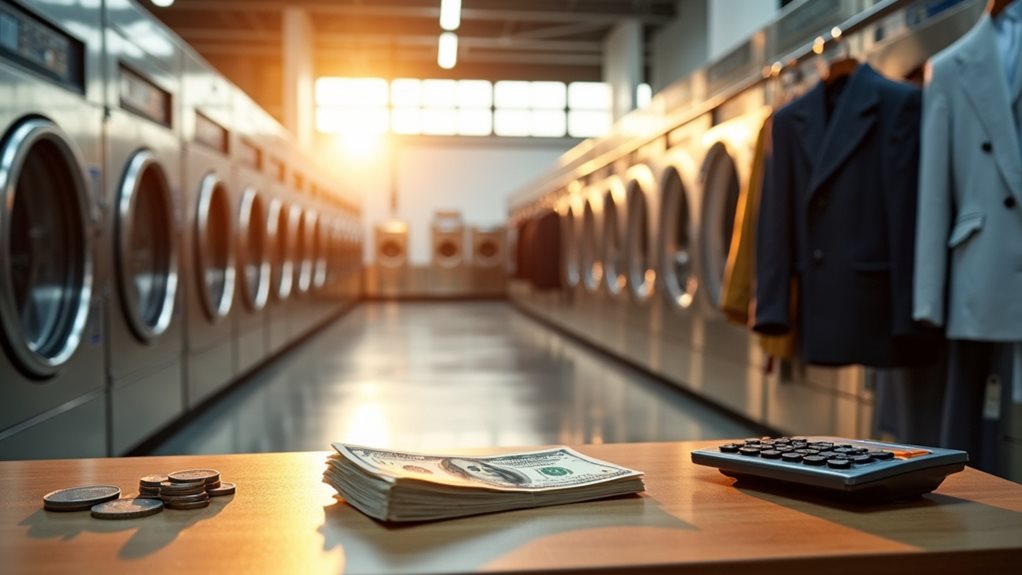
How much money can you actually pocket from your dry cleaning business after all the bills are paid, the employees go home, and you’re left counting what’s truly yours?
Your profit margins will typically dance between 30% and 50%, which translates to net margins of 10% to 25% depending on your operational efficiency.
Here’s what your average monthly earnings might look like:
- Struggling performance: Around $600 monthly
- Average performance: Approximately $3,000 monthly
- Exceptional performance: Up to $15,000 monthly
- High-performing powerhouses: Exceeding $50,000 monthly
Your owner earnings depend heavily on customer loyalty, service diversification, and location—urban areas consistently outperform small towns.
With proper cash flow management, you’re looking at potentially life-changing income from your dry cleaning business.
Dry cleaning owners who offer specialized services like wedding dress cleaning or leather treatment often achieve higher profit margins than those providing only standard cleaning services.
